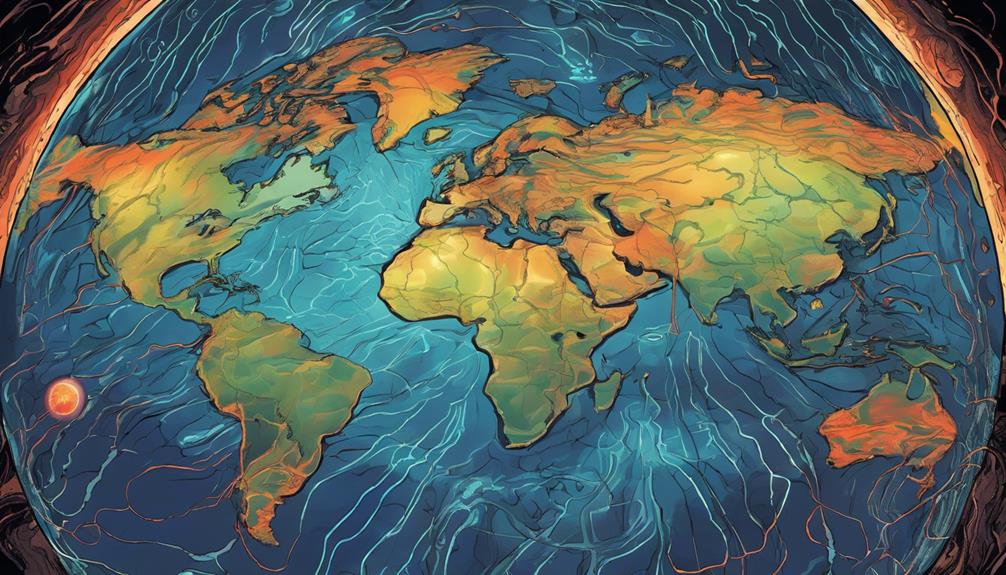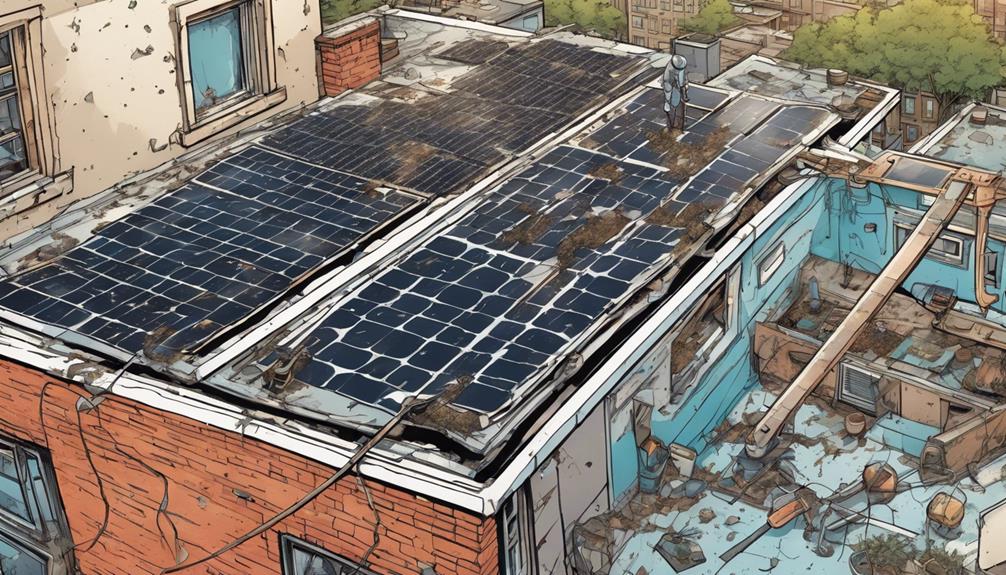As we shift towards a cleaner and more sustainable energy future, we're revealing the full potential of geothermal energy. This versatile and reliable solution extends beyond electricity generation to support heating and cooling systems, agriculture, and aquaculture, while significantly reducing greenhouse gas emissions. From boosting crop yields to powering homes, geothermal energy is transforming industries worldwide. With countries like Iceland and the United States leading the charge, we're on the cusp of a geothermal revolution. As we explore this exciting field further, we'll discover even more innovative applications and breakthroughs that are reshaping our energy landscape.
Key Takeaways
- Geothermal energy is a clean and reliable source of power, reducing emissions and providing stable electricity generation globally.
- It has diverse applications, including heating and cooling systems, agriculture, aquaculture, and industrial processes, supporting sustainable development.
- Geothermal power capacity has reached 13.3 gigawatts globally, with countries like Iceland and the United States leading in its utilization.
- Geothermal energy can reduce energy consumption by up to 50% in buildings, cutting energy bills and carbon emissions significantly.
- Regional trends show developing countries exploring geothermal energy for energy access and economic development, contributing to a cleaner future.
Geothermal Energy Applications
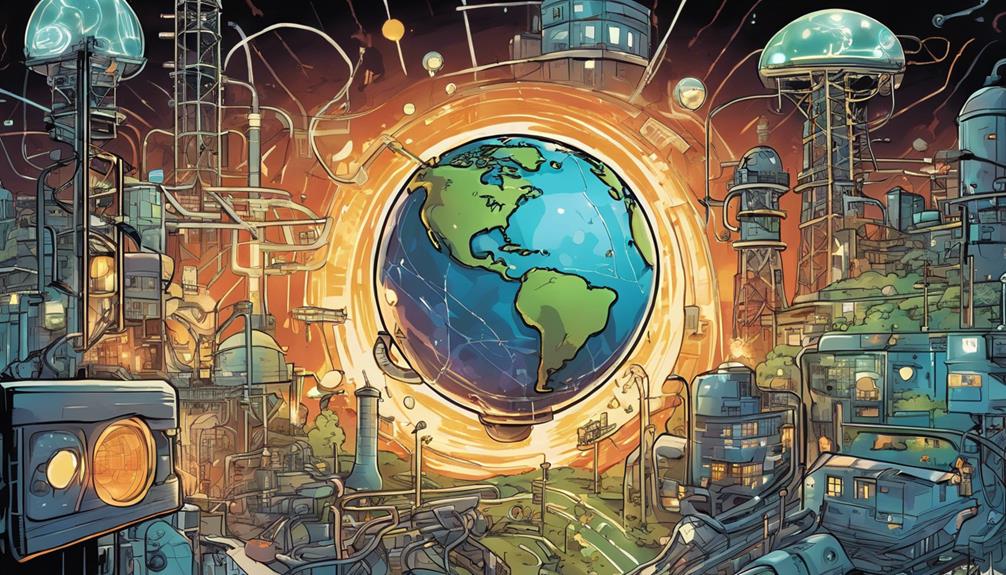
As we explore the world of geothermal energy, we uncover a versatile powerhouse that extends its benefits beyond electricity generation to a wide range of applications, from heating and cooling systems to agriculture and aquaculture.
We're talking about a clean energy source that not only provides stable electricity production but also supports sustainable development in various sectors. In agriculture, geothermal energy boosts crop yields and optimizes greenhouse cultivation. In aquaculture, it ensures ideal water temperatures for fish farming.
Additionally, geothermal energy is used in industrial processes, making it a reliable and sustainable solution. By harnessing geothermal energy, we can reduce greenhouse gas emissions and create a cleaner, healthier environment for future generations.
Power Generation and Emissions
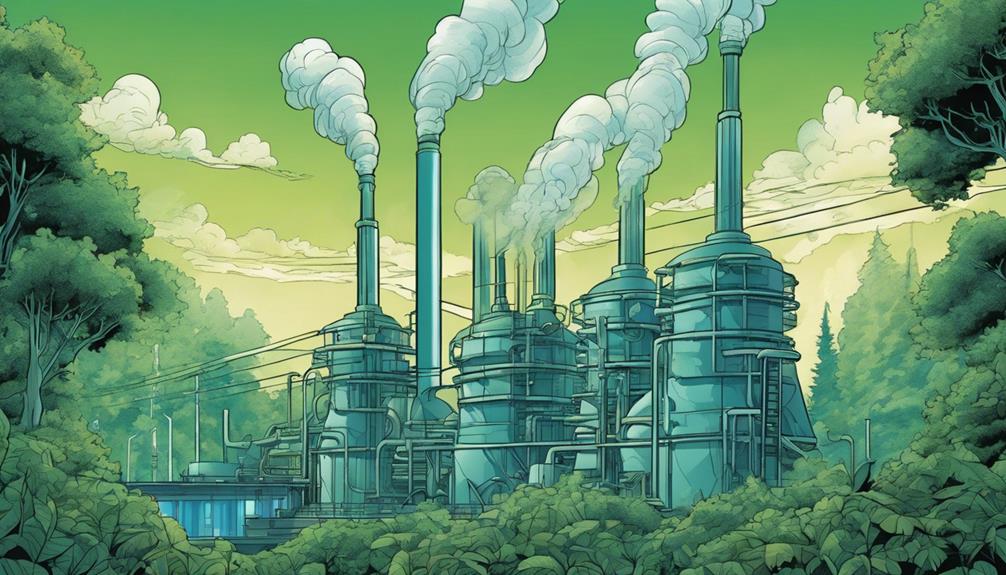
We're producing power and reducing emissions with geothermal energy, which uses the Earth's natural heat to generate electricity via turbines, providing a stable source of clean energy.
As we shift to a cleaner energy future, geothermal power plants play an essential role. Globally, we've reached 13.3 gigawatts of geothermal power capacity, notably reducing greenhouse gas emissions.
By harnessing the Earth's heat, we're creating a reliable and sustainable energy source. This clean energy is critical for our planet's future, and we're committed to increasing geothermal power generation.
Heating and Cooling Systems
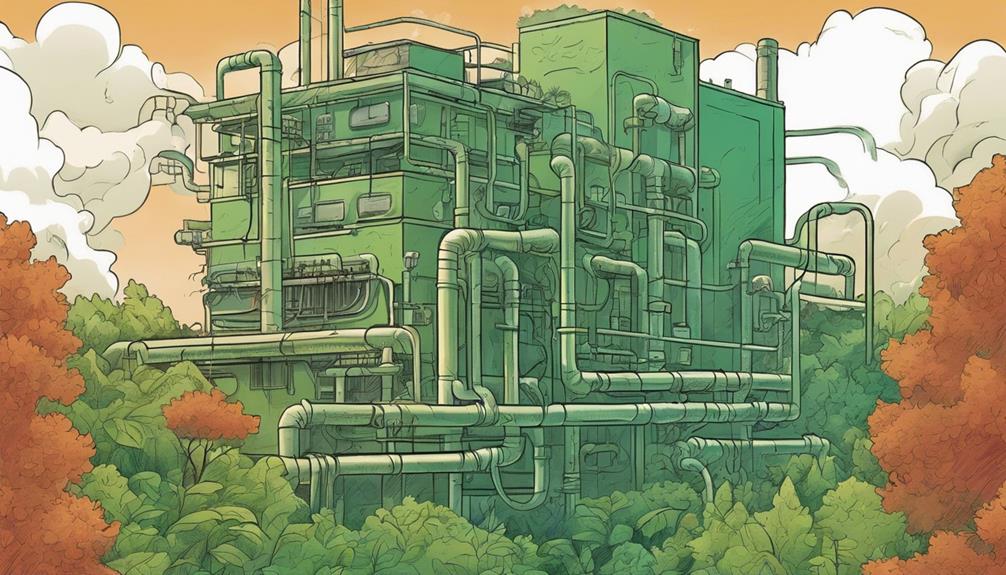
By harnessing the Earth's natural heat, geothermal systems in residential buildings can reduce energy consumption by up to 50% compared to traditional heating and cooling systems. We're talking about a significant cut in energy bills and a substantial decrease in carbon emissions.
Geothermal heat pumps are the game-changers here, providing efficient heating and cooling solutions. They work by tapping into the Earth's consistent temperature, a few feet underground, to warm or cool our homes. This means we can say goodbye to noisy, polluting air conditioning units and hello to a more sustainable future.
With geothermal systems, we're not only saving money but also doing our part for the environment.
Agriculture and Aquaculture Benefits

Geothermal energy's applications in agriculture and aquaculture are just as impressive, boosting crop yields and fish farming sustainability while reducing energy consumption and emissions.
We're seeing significant gains in greenhouse cultivation, where geothermal energy enhances temperature and humidity conditions for improved crop growth.
In fish farming, geothermal energy ensures ideal water temperatures, promoting healthy fish growth and reducing mortality rates.
By leveraging geothermal energy, we're not only increasing food production but also minimizing our environmental footprint.
This sustainable approach is a game-changer for the agriculture and aquaculture industries, supporting a cleaner, more food-secure future.
Regional Geothermal Energy Trends

Across the globe, distinct regional trends are emerging in geothermal energy development, with countries like Iceland, the United States, and developing nations charting their own paths towards harnessing this renewable resource.
In Iceland, we see a pioneer in geothermal utilization, where over 80% of heating needs are met by geothermal sources. The United States is also a significant player, with plants in California, Nevada, and Hawaii contributing to the country's renewable energy portfolio.
Meanwhile, developing countries like Kenya, Indonesia, and the Philippines are exploring geothermal energy to improve energy access and support economic development. As we continue to reveal the potential of geothermal energy, it's exciting to witness these regional trends shaping the global landscape.
Country-Specific Geothermal Advancements

How are countries around the world leveraging their unique geothermal resources to drive innovation and growth in this renewable energy sector? From Iceland's pioneering efforts to the United States' significant geothermal power production, each country is tapping into its distinct geothermal potential.
| Country | Geothermal Capacity | Notable Achievements |
|---|---|---|
| Iceland | 660 MW | Over 80% of heating needs met by geothermal sources |
| United States | 3,700 MW | Significant producer of geothermal energy, with plants in California, Nevada, and Hawaii |
| Indonesia | 1,300 MW | Ambitious targets to increase geothermal power generation by 2025 |
We're witnessing a global geothermal energy renaissance, with countries harnessing their geothermal resources to reduce reliance on fossil fuels, create jobs, and stimulate local economies. As we continue to explore and develop new geothermal projects, the possibilities for sustainable growth and innovation seem endless.
Future of Geothermal Energy Development
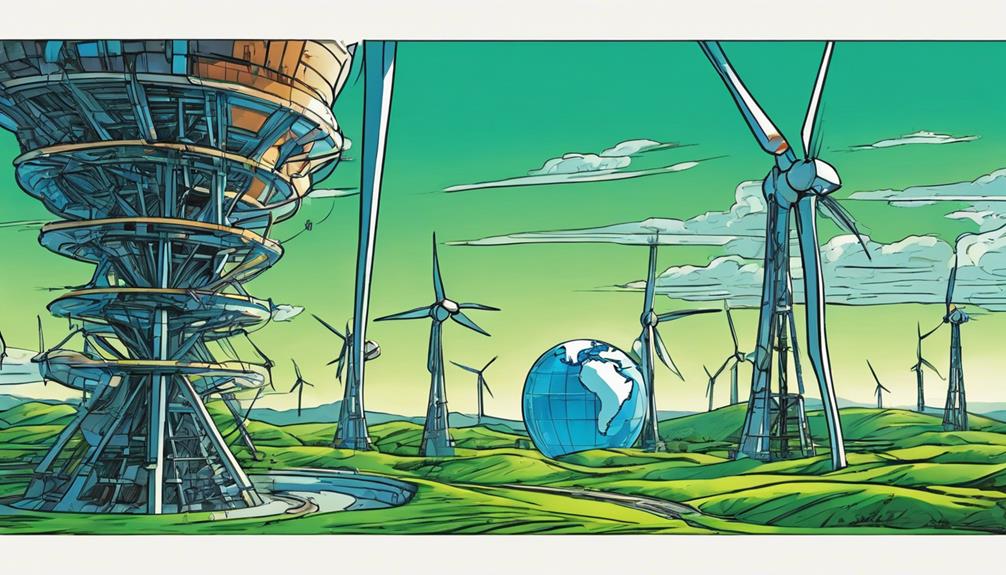
As we look to the future, we're poised to reveal even more of Earth's hidden heat, driving innovation and growth in the geothermal energy sector.
We're excited to see advancements in exploration and drilling technologies, enabling us to tap into previously inaccessible resources.
Enhanced geothermal systems will reveal new areas for development, and we'll witness increased investment in geothermal research and development.
As the industry expands, we'll see more countries embracing geothermal energy, reducing their reliance on fossil fuels and mitigating climate change.
We're committed to overcoming the challenges ahead, ensuring a sustainable and prosperous future for geothermal energy.
Frequently Asked Questions
Can Geothermal Energy Be Used for Water Desalination and Purification?
"We're exploring a fascinating aspect of geothermal energy – can it be used for water desalination and purification? Yes, geothermal energy can power desalination plants and purify water, providing a sustainable solution for clean water."
How Does Geothermal Energy Affect Local Ecosystems and Wildlife Habitats?
Like a gentle raindrop on a serene lake, geothermal energy softly ripples into local ecosystems, often boosting biodiversity and creating habitats for unique microorganisms, while careful planning minimizes disruptions to wildlife habitats.
Are Geothermal Systems Suitable for Small-Scale, Rural, or Remote Communities?
"We think geothermal systems can be perfect for small-scale, rural, or remote communities, offering reliable, sustainable energy and reduced emissions, especially with decentralized, modular designs and community-based initiatives."
Can Geothermal Energy Be Stored for Later Use or Peak Demand Management?
"We can store geothermal energy for later use or peak demand management through various methods, including thermal energy storage, battery storage, and hybrid systems, ensuring a reliable and efficient supply of clean energy."
What Are the Typical Maintenance and Lifespan Costs of Geothermal Systems?
We've seen it in Iceland, where geothermal systems have been running for decades with minimal maintenance. Typically, geothermal systems last 20-30 years, with maintenance costs averaging 1-2% of initial investment annually.
Conclusion
'We've got the earth's thermal mojo working for us, and it's about time. As we ditch fossil fuels, geothermal energy is the ultimate side hustle – powering our homes, growing our food, and keeping our cool.
It's a global party, and everyone's invited. We're not just reducing emissions, we're creating jobs, stimulating economies, and basically saving the planet. Who knew being sustainable could be so cool?'
